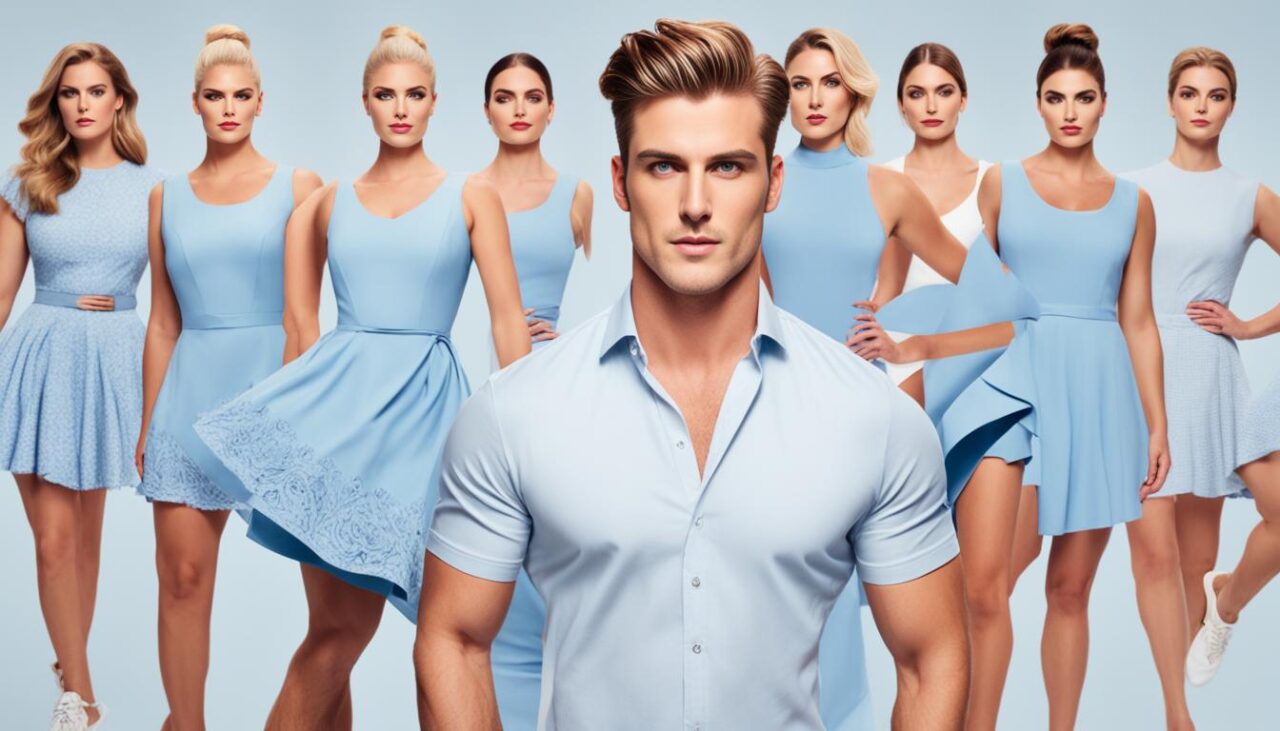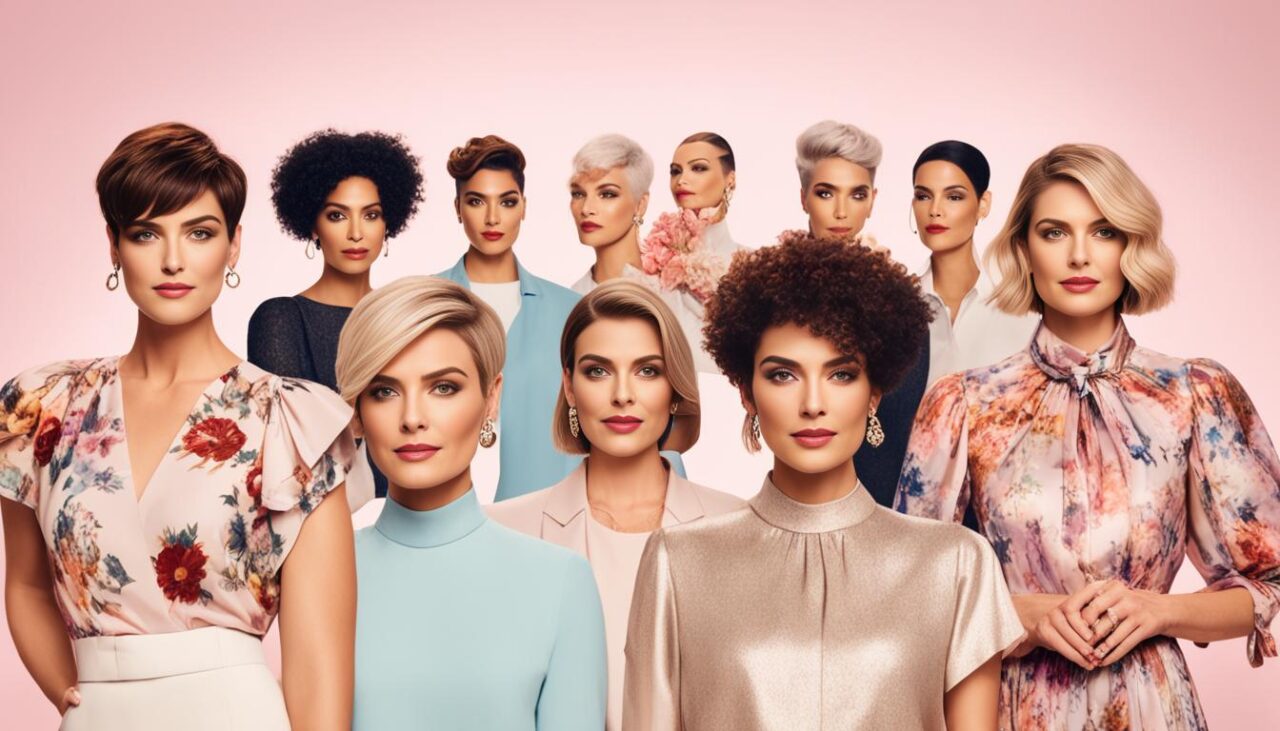Throughout history and across cultures, beauty standards have dictated the ways in which individuals are perceived and the manner in which they present themselves. These ideals are not merely aesthetic; they are deeply entwined with gender perspectives and societal expectations. Today, as we find ourselves engaging beauty norms with increased scrutiny and a growing desire for inclusivity, understanding the gendered implications of these standards becomes more crucial than ever. Beauty is no longer a one-dimensional concept but a dynamic interplay of cultural, social, and individual factors that shape our understanding of femininity and masculinity.
The dialogue about beauty standards tends to frequently align with discussions on gender. It raises pivotal questions: How do the prevailing norms influence what it means to embody femininity or masculinity? In what ways do people of different gender identities engage with the long-held norms and carve their spaces within them? This opening salvo serves to explore these questions, revealing the complexities and the transformative potential within the realm of beauty and gender.
Contents
Key Takeaways
- The intricacies of gender roles as reflected through beauty norms.
- The role of societal expectations in reinforcing or challenging traditional beauty standards.
- An exploration into the evolving nature of engaging beauty norms from various gender perspectives.
- An understanding of how beauty and gender identity intersect and influence each other.
- The importance of inclusivity and diversity in the current conversation about beauty standards.
Exploring the Evolution of Beauty Standards
Throughout history, the evolution of beauty has continually reflected the complexities of societies and their ever-shifting values. As we venture through time, we uncover the profound impact of cultural, historical, and media influences on our aesthetic ideals. This journey into the past and present of beauty norms not only enlightens us about our ancestors but also sheds light on our contemporary views, providing a mirror to the ever-changing face of beauty standards.
The Historical Context of Beauty Ideals
From the robust figures symbolizing fertility seen in ancient Venus figurines to the corseted waistlines of the Victorian era, historical beauty ideals have been in a state of constant flux. These paradigms were deeply intertwined with the social fabric of their times, often serving as indicators of status, health, and morality. Tracing the lineage of these ideals helps us understand the roots from which our modern perceptions of beauty grow.
Cultural Influences on Aesthetic Preferences
Cultural aesthetics vary significantly across the globe, a testament to the world's diversity. Beauty is viewed through different lenses – from the neck rings of the Kayan people to the elongated earlobes esteemed by the Maasai. Aesthetic preferences are not merely individual choices but are collective expressions of cultural identity and heritage, showcasing the rich tapestry of what societies deem beautiful.
Media's Role in Shaping Contemporary Beauty Norms
In the age of digital dynamism, media and beauty norms have become increasingly entwined. Modern media, with its pervasive reach and powerful imagery, plays a pivotal role in establishing and perpetuating beauty standards. From Hollywood's silver screen sirens to the polished influencers of Instagram, media platforms continue to sculpt and refine our definition of attractiveness, often creating an aspirational blueprint for beauty that resonates with, or sometimes dictates, public sentiment.
The Intersection of Gender Norms and Beauty Expectations
The concept of beauty is deeply entwined with the social fabric, influenced by gender norms and often defined by gendered beauty standards. These norms and expectations are not just societal whims; they are powerful dictators of behavior and self-perception, affecting a wide range of life aspects from personal relationships to professional opportunities. Recognizing the intersectionality within these standards is critical, as it illuminates the diverse experiences individuals encounter based on their gender identity in relation to other factors such as race, class, and age.

In many cultures, beauty standards are distinctly demarcated, prescribing a particular set of traits that women and men should aspire to embody. For women, this often means adhering to ideals of femininity that emphasize traits such as youthfulness, slenderness, and certain standards of facial symmetry. Men, on the other hand, are often expected to align with ideals of masculinity defined by muscularity, height, and rugged facial features. These beauty expectations can be restrictive and exclusionary—promoting a narrow vision of attractiveness that discounts the rich variety of human forms.
The impact of these prescribed norms is far-reaching, influencing one's sense of self and worth. Living in a society where gender norms are tightly woven into the fabric of daily life, individuals often internalize these beauty expectations, which in turn can shape behavior, fashion choices, and overall self-esteem. The pressure to conform to these standardized beauty ideals can lead to a cascade of psychological effects, including body dissatisfaction and diminished mental health.
Thus, the cultivation of a more inclusive understanding of beauty that celebrates diverse body types, ages, and genders is not simply a matter of expanding societal acceptance—it's also essential for fostering greater individual well-being.
To challenge and transform these ingrained ideals, acknowledging and promoting intersectionality within the dialogue of beauty norms is essential. A more nuanced discussion around beauty that includes the voices and experiences of all genders, especially those at the intersection of multiple marginalized identities, is key to dismantling outdated standards. Only through a conscious uncoupling of beauty from rigid gender prescriptions can society begin to appreciate the true diversity of human beauty.
Breaking Down Femininity and Beauty Ideals
The ideals of femininity and beauty have been deeply interwoven throughout history, becoming cornerstones upon which women are judged and value themselves. However, as society evolves, the monolithic standards that once defined these concepts are being scrutinized and redefined. In this dialogue on beauty ideals, we delve into the complex relationship between femininity and the societal expectations that mold it, examining the pressures women face, the psychological interplay behind aesthetic choices, and the inspiring steps being taken to challenge and transform stereotypes.
Pressure to Conform: The Female Experience
In a world saturated with images of perfected beauty, the female experience is often underscored by an intense pressure to conform to unattainable beauty ideals. From an early age, girls are bombarded with messages that dictate the primacy of appearance, leading to a labyrinth of self-esteem and identity challenges. This societal expectation not only shapes the journey into womanhood but also imposes a standard that demands adherence to a preset feminine image.
The Psychology Behind Makeup and Fashion Choices
The intersection of makeup psychology and fashion choices provides a fascinating window into the ways women navigate the terrain of beauty ideals. The act of applying makeup, far more than a daily routine, can be both an armor and a form of self-expression. It is a tool that can empower, camouflage, or amplify, depending on the wearer's intent. Fashion choices similarly echo this sentiment. They can be statements of individuality, conformity, or rebellion, reflecting the wearer's psychological state and personal narrative against the backdrop of societal beauty expectations.
Challenging Stereotypes: Examples of Resistance and Empowerment
Amidst these deeply ingrained norms, countless individuals and collectives are challenging stereotypes and promoting diverse expressions of femininity. By embracing a spectrum of beauty standards, they're empowering women to define beauty on their own terms. These acts of resistance range from eschewing makeup completely to redefining fashion trends that reflect reality rather than fantasy, all serving as a beacon for those seeking to shake off the mantle of traditional beauty ideals.

Understanding Masculinity in the Context of Beauty Standards
In recent years, the discourse around masculinity and male beauty standards has undergone a significant transformation, with traditional constructs being actively challenged and reshaped. The emergence of movements aimed at redefining masculinity signals a shift in gender expectations, where the rigid molds that once dictated male grooming, appearance, and behavior are being reconsidered. This pivot is not only about aesthetics but also encompasses a broader acceptance of diversity and fluidity within the context of masculinity.
Today's men find themselves at a crossroads between past notions of a stoic, rugged masculinity and a more open, varied expression of what it means to be a man. The push against an archetypal, one-size-fits-all standard of male beauty has been influenced by various factors, including advocate voices, emerging subcultures, and a new wave of male public figures who defy old norms. This is not a mere trend but a cultural shift toward acknowledging that beauty—and indeed masculinity—is not monolithic.
The male beauty standards currently in flux reflect a society that is growing more comfortable with its complexity. From the proliferation of skincare products targeting men to fashion industries catering to a more inclusive range of male body types, the traditional barriers are being dismantled. This progression is not simply about external changes but also the internal liberation from the pressures of archaic benchmarks. In the legacy of those who have dared to stand apart, modern men are finding the freedom to embrace a fuller, more authentic version of themselves.
More than just an aesthetic, redefining masculinity is about fostering well-being and dismantling harmful stereotypes. It is about creating space where men can explore and express their identities without fear or judgment.
As we move forward, the conversation continues to evolve, engaging with questions of identity, acceptance, and authenticity. By exploring and embracing this newfound flexibility in masculinity, we carve out a future where individuals have the liberty to define beauty on their own terms, free from suffocating gender expectations.
Engaging Beauty Standards and Gender Diversity
The evolving landscape of beauty standards is increasingly colored by gender diversity, delineating a new horizon where personal and collective narratives blend to reshape societal expectations. With the prolific expansion of beauty spectrums influencing societal ideals, we witness a dynamic dialogue between identity expression and aesthetic appreciation. This section uncovers the transformative role of social media, the widening definitions of beauty within diverse gender contexts, and the lived experiences that enrich our understanding of beauty today.
The Impact of Social Media on Personal Beauty Narratives
Social media has emerged as a potent force in molding the social impact of beauty narratives. Platforms like Instagram and TikTok serve as canvases for self-expression and hubs for communities to challenge the monolithic portrayal of attractiveness that once dominated the mainstream. These digital realms empower users to broadcast and celebrate a myriad of beauty expressions. The social media impact on personal beauty narratives is profound, engendering a culture where difference becomes the touchstone of the collective beauty ideal.
Gender Diversity and the Expanding Spectrum of Beauty
Through the lens of gender diversity, beauty is no longer a concept shackled by rigid binaries. Instead, it blossoms into an ever-expanding spectrum that defies traditional labels and embraces a full array of gender identities. As society becomes more cognizant and inclusive, the expanding beauty spectrum reflects a more holistic and nuanced understanding of what it means to be beautiful. This widened scope not only liberates individuals from stringent beauty standards but also facilitates a more encompassing discussion about attractiveness that is as unique as the people it represents.
Real Stories: How Individuals of Different Genders Engage with Beauty
Behind each engagement with beauty lies a story that transcends mere aesthetics, informing us about identity, resistance, and affirmation. These real stories form the bedrock of our current understanding of beauty as individuals of various genders share how they navigate, question, and redefine beauty standards. From embracing body positivity to subverting gendered expectations through fashion and grooming, personal encounters with beauty standards present a tapestry of experiences that underscore the heterogeneous nature of attractiveness. In listening to these narratives, we grasp the complex and transformative relationship between personal identity and societal beauty ideals.







